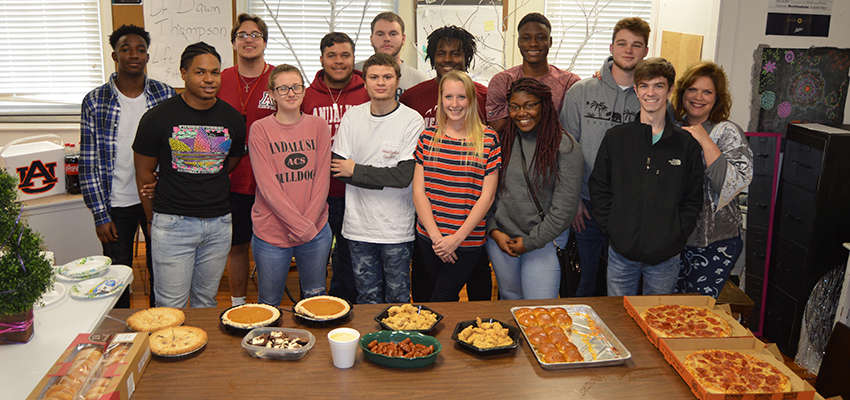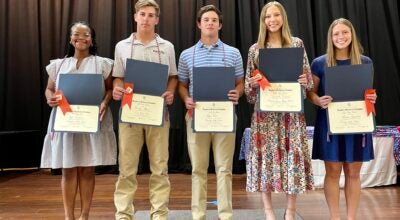Read, write, eat: Students embrace analogy for essays
Published 2:03 am Friday, February 9, 2018

- Thompson’s senior English class. Christopher Smith/Star-News
Andalusia High School seniors enjoyed a veritable feast yesterday of pizza, lasagna, sausages, ham sandwiches, pies, doughnuts and brownies, all just to learn about how to write essays.
Andalusia High School English teacher Dawn Thompson taught students to look at writing essays a little differently this semester, by looking at each essay as if it were a meal.
“It kept the students at a very high level of engagement,” Thompson said. “It also helped that we had a massive feast when everyone finished their essays on Frankenstein.”
Thompson incorporated the essays are like meals analogy after reading about it on an online site that teachers use to trade ideas.
“It really put it in a different way that made me understand what I was doing,” R.J. Drish, a senior at Andalusia High School, said. “It was very creative and definitely helped when I wrote my essay.”
The analogy makes the connection that each part of the essay is like a meal. This is how it works:
- The menu makes a promise about a specific meal. The thesis statement is a snapshot or promise of the overall argument to come.
- Free samples are sometimes given to persuade the buyer to purchase a meal or product. The introduction previews the topic, the thesis, the context, and sometimes the reasons why.
- Each course of the meal (appetizer, salad/soup, entree) is served. Similarly, the body paragraphs each prove a supporting point of the overall thesis.
- Waiters take away old plates, refill cups, and bring each new set of food. The transitions in a paragraph connect the sentences within paragraphs as well as across the paragraphs themselves.
- Dessert is served, and the overall meal is complete; diners feel that the promise has been fulfilled. In the conclusion paragraph it paraphrases and brings the thesis and the biggest supporting points to review and summarize.
The analogy even includes seasonings that help make a food taste better, such as, salt or butter and how they can be just like proven facts or text evidence to make a paper better.
“I was a little too poetic when I wrote so I would be adding a little too much to my papers, so looking at this analogy I realized that I can’t add to much butter to my paper or readers won’t like it as much,” AHS senior J.J. Lowery said.
Ryan Palmer said that just like when customers eat they cannot skip to the dessert, in a paper writers cannot skip to the conclusion.
This year, the seniors wrote their research papers on the book Frankenstein by Mary Shelley. This year is the book’s 200th anniversary.
Frankenstein follows Victor Frankenstein’s triumph as he reanimates a dead body, and then his guilt for creating such a thing. When the “Frankenstein monster” realizes how he came to be and is rejected by mankind, he seeks revenge on his creator’s family to avenge his own sorrow. Mary Shelley first wrote Frankenstein as a short story after the poet Lord Byron suggested his friends each write a ghost story.
“Even the kids that didn’t read the book in its entirety, still had to go back and at least read parts of it so they could write their paper from it,” Thompson said, “I honestly think that the analogy helped them have a deeper understanding of how to write about the book.”



